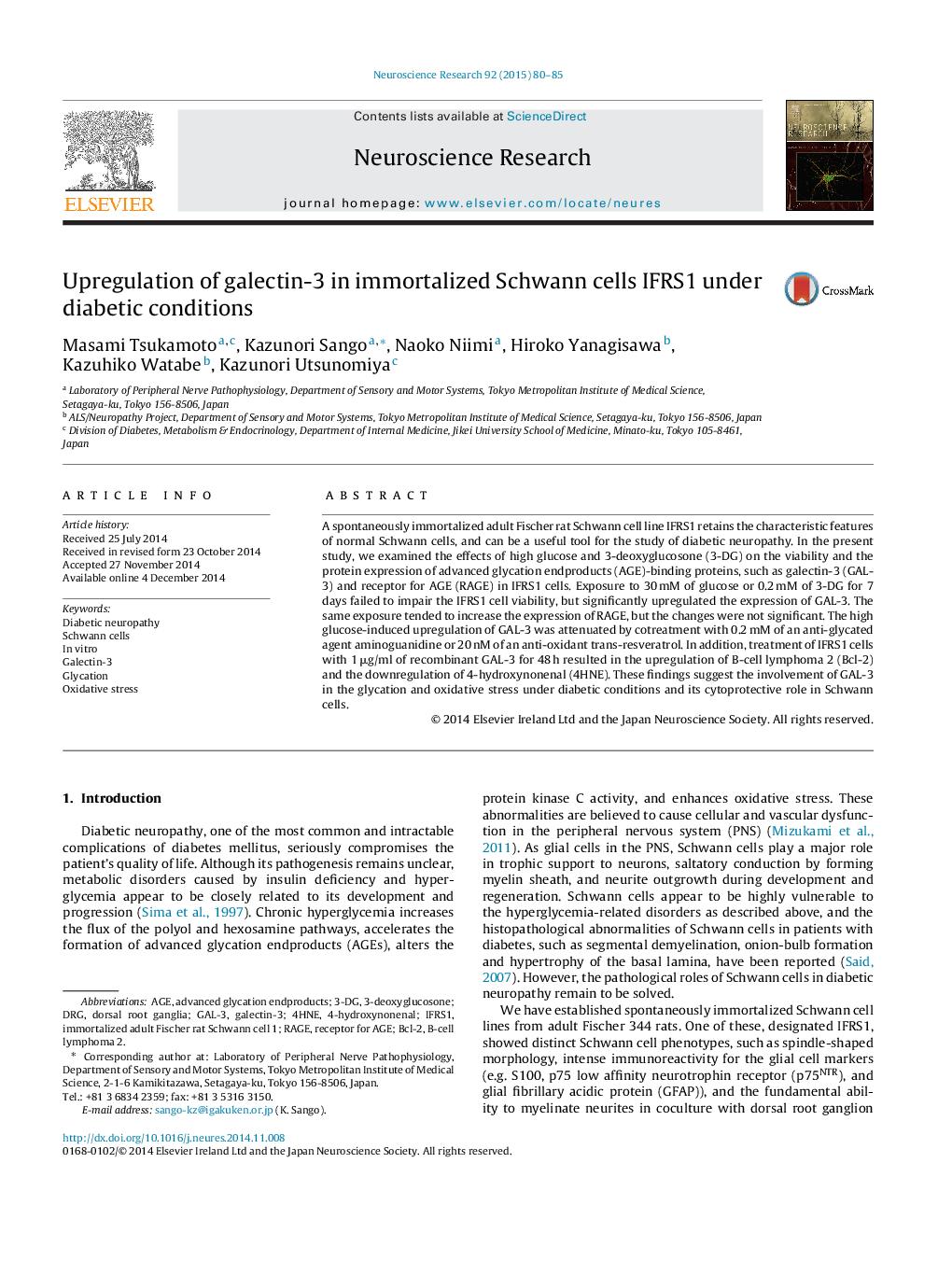| Article ID | Journal | Published Year | Pages | File Type |
|---|---|---|---|---|
| 4351390 | Neuroscience Research | 2015 | 6 Pages |
Abstract
A spontaneously immortalized adult Fischer rat Schwann cell line IFRS1 retains the characteristic features of normal Schwann cells, and can be a useful tool for the study of diabetic neuropathy. In the present study, we examined the effects of high glucose and 3-deoxyglucosone (3-DG) on the viability and the protein expression of advanced glycation endproducts (AGE)-binding proteins, such as galectin-3 (GAL-3) and receptor for AGE (RAGE) in IFRS1 cells. Exposure to 30 mM of glucose or 0.2 mM of 3-DG for 7 days failed to impair the IFRS1 cell viability, but significantly upregulated the expression of GAL-3. The same exposure tended to increase the expression of RAGE, but the changes were not significant. The high glucose-induced upregulation of GAL-3 was attenuated by cotreatment with 0.2 mM of an anti-glycated agent aminoguanidine or 20 nM of an anti-oxidant trans-resveratrol. In addition, treatment of IFRS1 cells with 1 μg/ml of recombinant GAL-3 for 48 h resulted in the upregulation of B-cell lymphoma 2 (Bcl-2) and the downregulation of 4-hydroxynonenal (4HNE). These findings suggest the involvement of GAL-3 in the glycation and oxidative stress under diabetic conditions and its cytoprotective role in Schwann cells.
Keywords
Related Topics
Life Sciences
Neuroscience
Neuroscience (General)
Authors
Masami Tsukamoto, Kazunori Sango, Naoko Niimi, Hiroko Yanagisawa, Kazuhiko Watabe, Kazunori Utsunomiya,
